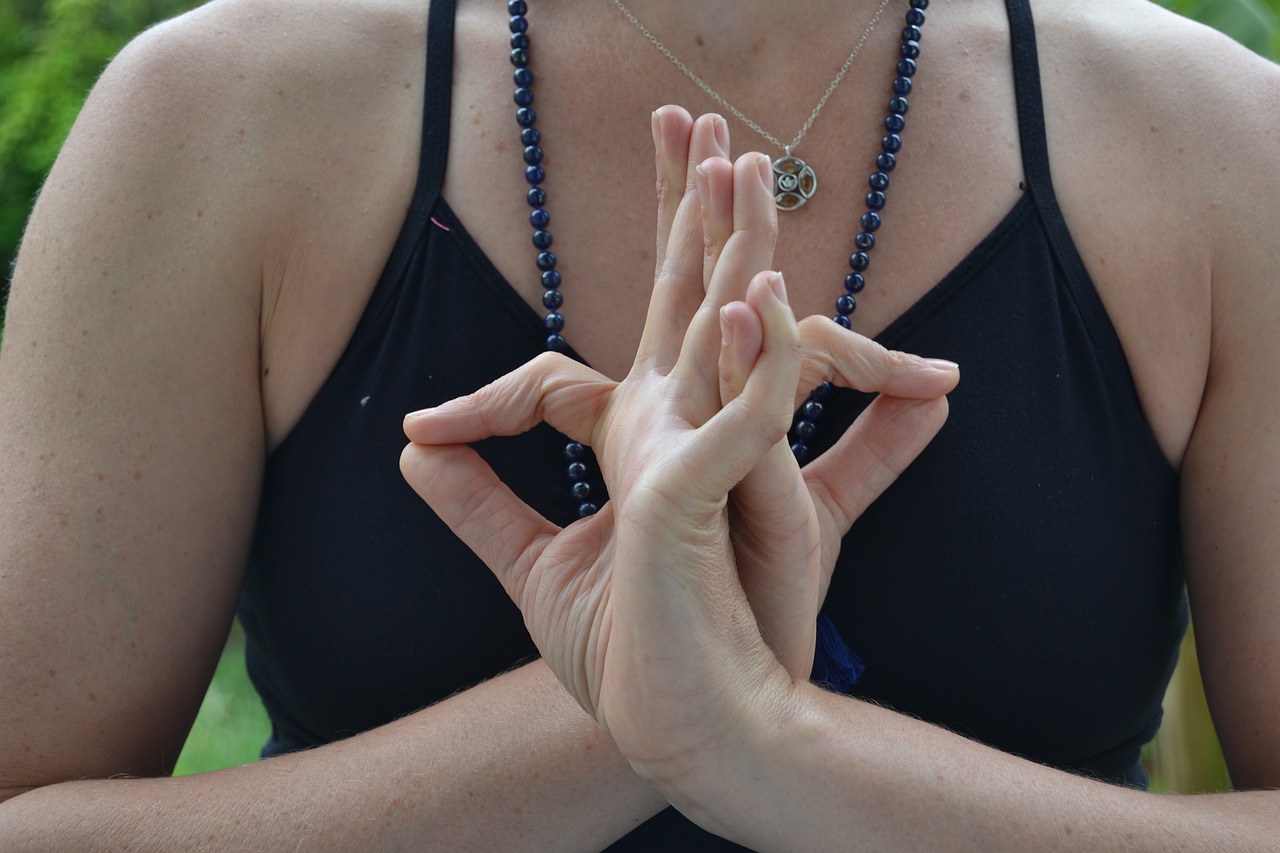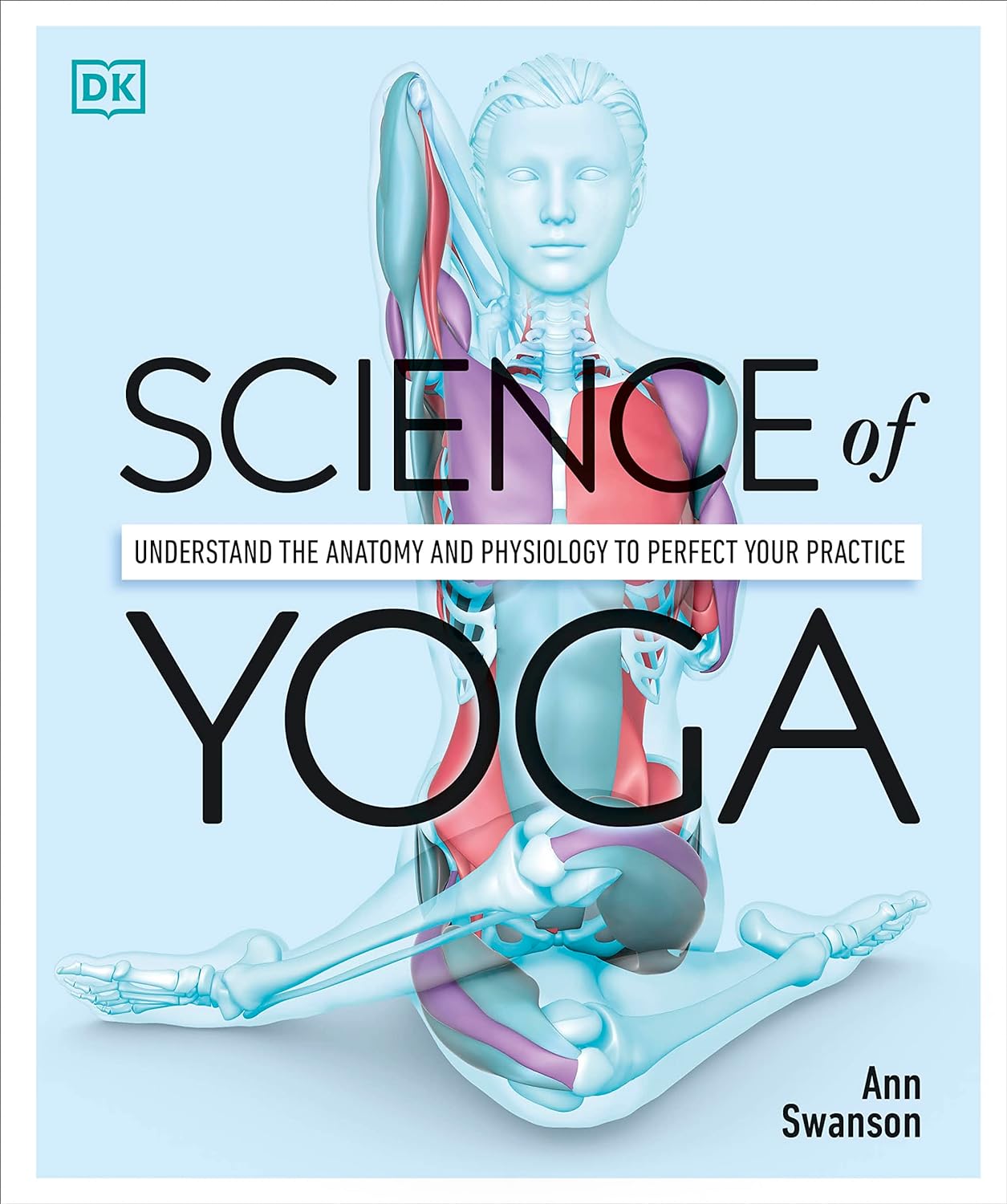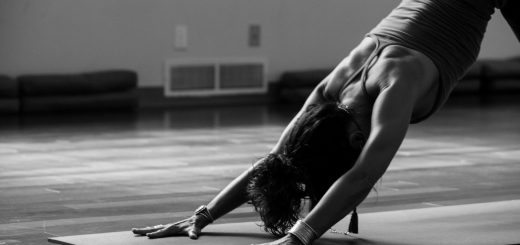The Power of Breathwork in Yoga

Before diving in, please note: This post is for informational purposes only. If you’d like to know more about how we approach topics, feel free to check out our friendly Disclaimer Page.
Hey there, amazing readers! 🖐️ Just a quick note: yes, we know there are a lot of ads here. Trust us, we get it—it’s not the prettiest look, but they help us keep this blog alive and kicking. Those pesky little ads cover the costs of all the behind-the-scenes magic, from hosting and tech stuff to creating content we hope you’ll love.
We’re committed to delivering quality posts, and your support (even just sticking around despite the ads) means everything to us. So, bear with us, and thanks for helping us keep the good vibes rolling. Now, on to the fun stuff! 😉
TRANSLATE BUTTON AT THE END OF THE ARTICLE
A Quick Overview
Breathwork in yoga is like the secret sauce that enhances our practice.
It’s that invisible thread connecting our mind, body, and spirit.
When we think of yoga, we often picture intricate poses and peaceful meditation.
But breath—yes, just breathing—is a crucial player in this game.
It can calm our minds, energize our bodies, and even transform our emotions.
So, let’s dive into the power of breathwork and discover how it can elevate our yoga experience.
Discovering the Essence of Breathwork in Yoga Practice
Breathwork is the practice of consciously controlling our breath.
In yoga, this means using our breath to enhance our movements and deepen our mindfulness.
The ancient yogis understood that breath is life.
It acts as a bridge connecting the physical and spiritual aspects of our being.
When we breathe intentionally, we amplify our practice.
Imagine this: you’re in downward dog, and you feel tension in your shoulders.
Now, take a deep breath in.
As you exhale, relax those shoulders.
Feel the difference?
That’s breathwork in action!
It helps us tune into our bodies, allowing us to release tension and find ease in our poses.
The essence of breathwork lies in its simplicity.
We often overlook how our breath affects our mood and energy levels.
When we’re anxious, our breath becomes shallow and rapid.
Conversely, when relaxed, it flows easily.
By learning to control our breath, we can influence our emotional states.
Breath is also a tool for grounding ourselves.
In a world filled with distractions, focusing on our breath brings us back to the present moment.
Whether we’re in a yoga class or just sitting quietly at home, breath awareness helps us cultivate mindfulness.
In my own practice, I’ve found that integrating breathwork enhances not just my yoga poses but my overall well-being.
It brings clarity and calmness, making even the toughest days feel manageable.
Taking a moment to breathe deeply can turn a stressful situation into one filled with peace.
Breathwork is more than just a technique; it’s an experience.
Engaging with our breath allows us to explore the depths of our practice.
This journey can lead to self-discovery, inner peace, and a profound sense of connection to ourselves and the universe.
The Science Behind Breathwork: Why It Matters
Research backs up the benefits of breathwork.
Studies show that conscious breathing can regulate our autonomic nervous system, which controls our body’s involuntary functions.
This means our breath can shift us from a state of stress to relaxation, helping us manage anxiety and improve focus.
When we engage in deep, rhythmic breathing, we stimulate the vagus nerve.
This nerve plays a vital role in our body’s relaxation response.
As it activates, it can lower heart rates and decrease blood pressure.
The result?
A calmer, more centered you.
Moreover, breathwork increases oxygen supply to our brains, enhancing cognitive function.
When we breathe deeply, we send more oxygen-rich blood to our brain, allowing for improved concentration and mental clarity.
I’ve experienced this firsthand during intense yoga sessions; a few deep breaths can clear my mind and sharpen my focus.
There’s also a fascinating relationship between breath and emotions.
Our breath is directly linked to the limbic system, the part of our brain that processes emotions.
By consciously changing our breathing patterns, we can influence our emotional responses.
For instance, long, slow exhales can trigger feelings of relaxation, while quick, short breaths can energize us.
Breathwork is particularly beneficial for individuals experiencing stress or burnout.
Engaging in breathing exercises can decrease levels of cortisol, the stress hormone.
It’s a simple yet effective way to combat the pressures of daily life.
Incorporating breathwork into your routine doesn’t require extensive training.
Just a few minutes of focused breathing can have a positive impact.
As we take time to understand the science of our breath, we unlock new opportunities for healing and growth.
How Breathwork Enhances Your Yoga Experience
Breathwork is like adding turbo fuel to your yoga practice.
It enhances every pose, every moment, and every experience.
Picture this: you’re flowing through a sun salutation.
With each inhale, you lift your arms, and with each exhale, you fold forward.
This synchrony between breath and movement creates a seamless and powerful flow.
When we breathe consciously, we can deepen our stretches and find more strength in our poses.
Rather than just going through the motions, we become more aware of how our body feels.
This awareness can lead to a more profound connection with our practice.
Additionally, breathwork helps us cultivate patience and focus.
It encourages us to remain present, regardless of what distractions arise.
When we focus on our breath, we train our minds to stay in the moment.
This skill translates beyond the mat into our daily lives.
Using breathwork during challenging poses can also provide a sense of relief.
Imagine holding a difficult pose, feeling the burn.
Instead of letting frustration take over, I take a deep breath, and suddenly it feels a little easier.
Breath can be our ally in overcoming obstacles.
Furthermore, integrating breathwork into our practice can lead to enhanced relaxation at the end of our sessions.
A mindful savasana, combined with conscious breathing, can amplify feelings of tranquility and contentment.
It’s the cherry on top of an already fulfilling practice.
Breathwork also fosters community within yoga classes.
When everyone in the room breathes together, there’s a shared energy that’s palpable.
It creates a supportive atmosphere where we can all thrive and grow together.
Different Breathwork Techniques to Explore in Yoga
There’s a treasure trove of breathwork techniques to enrich your yoga practice.
Here are a few of my favorites:
Ujjayi Breath: Also known as "victorious breath," it involves slightly constricting the throat to create an oceanic sound as you breathe.
This technique helps to maintain focus and can increase heat in the body.
Nadi Shodhana: This alternate nostril breathing technique balances the left and right sides of the brain.
It’s wonderful for calming the mind and improving concentration.
Kapalabhati: Often referred to as "skull shining breath," it involves forceful exhalations followed by passive inhalations.
This energizing practice is great for waking up the body and clearing the mind.
Bhramari: Known as "humming bee breath," this technique involves making a humming sound during exhalation.
It soothes the nervous system and promotes relaxation.
Box Breathing: This method involves inhaling for a count of four, holding for four, exhaling for four, and holding again for four.
It’s excellent for grounding and calming the mind.
Lion’s Breath: This playful technique involves inhaling deeply and exhaling with a roar while sticking out your tongue.
It’s a fun way to release tension and boost your mood.
Each technique offers unique benefits, so don’t hesitate to explore and find what resonates with you.
Mixing and matching can keep your practice fresh and exciting.
The Connection Between Breath and Mindfulness in Yoga
Breath and mindfulness are intricately linked.
When we focus on our breath, we anchor ourselves in the present moment.
This connection is vital for cultivating mindfulness in our yoga practice.
Mindfulness is all about awareness.
It encourages us to observe our thoughts and feelings without judgment.
By concentrating on our breath, we learn to stay present, allowing us to experience our practice fully.
This awareness helps us tune into what our bodies need, whether that’s a deeper stretch or a moment of stillness.
Breath awareness also cultivates self-compassion.
As we become more attuned to our bodies and breath, we learn to listen to what we truly need.
For instance, if I’m feeling tired, I might choose restorative poses rather than pushing through a challenging flow.
This gentle approach allows us to honor our bodies and their limits.
It’s a powerful reminder that yoga isn’t about perfect poses; it’s about connection and self-acceptance.
Breathwork helps us cultivate this mindset, making our practice more meaningful.
Moreover, practicing mindfulness through breath can lead to insights about ourselves.
As we breathe deeply and observe our thoughts, we may uncover patterns or beliefs that no longer serve us.
This self-discovery can be transformative, paving the way for growth and healing.
Breath also serves as a powerful tool for transitioning between poses.
Instead of rushing from one position to another, taking a moment to breathe helps us create space and intention in our practice.
This mindful approach enhances the flow and makes each movement feel more connected.
Ultimately, the synergy between breath and mindfulness enriches our yoga experience.
It encourages us to slow down and savor the journey, transforming our practice into a source of joy and fulfillment.
Energizing Your Practice: Breathwork for Vitality
Feeling sluggish?
Breathwork can be your ticket to revitalization.
Certain breathing techniques can energize us, making it easier to tackle a challenging yoga session or even a busy day.
One of my go-to techniques is Kapalabhati.
This practice fills me with energy and confidence, preparing me for whatever lies ahead.
With its forceful exhales, it helps wake up my entire system.
Another invigorating technique is Breath of Fire.
This rapid, rhythmic breathing technique raises our energy levels and increases focus.
It’s particularly effective when I need a quick pick-me-up before a workout.
Ujjayi breath, while calming, can also energize.
The slight constriction in the throat adds intensity to the breath, creating a sense of vigor during practice.
It helps maintain a steady rhythm, allowing me to flow through each pose with grace.
You can also use breathwork to enhance your stamina.
By syncing your breath with your movements, you cultivate a natural flow that keeps you energized throughout your practice.
This approach allows for a sustainable pace, preventing exhaustion.
Incorporating energizing breathwork into your routine is like adding fuel to a fire.
You feel vibrant and ready to take on anything.
A few minutes of focused breathing can make all the difference.
Don’t underestimate the power of breath!
It’s a simple, accessible way to elevate your energy levels.
So next time you’re feeling low, take a moment to breathe deeply and watch as your vitality returns.
Calming Your Mind: Breath Techniques for Stress Relief
Sometimes, life feels overwhelming.
In those moments, breathwork can serve as a soothing balm for our minds.
Certain techniques can calm the storm, providing relief from stress and anxiety.
One of my favorites for relaxation is Nadi Shodhana.
This alternate nostril breathing technique helps balance the nervous system, promoting a sense of calm.
It’s an ideal practice for winding down after a long day.
Another go-to is Bhramari, the humming bee breath.
The vibrations produced during the exhalation help to ease tension and quiet the mind.
It’s a delightful way to release stress while inviting tranquility.
Box breathing is also a game-changer for reducing anxiety.
The structured counting helps engage the mind, creating a sense of control.
When I feel my thoughts racing, this technique brings me back to center.
Gentle exhales can also trigger the body’s relaxation response.
Focusing on long, slow breaths helps activate the parasympathetic nervous system, leading to a decrease in stress levels.
It’s incredible how something as simple as breath can have such a profound impact.
Creating a calming space for your breathwork can enhance its benefits.
Find a quiet corner, dim the lights, and take a few moments to breathe.
This intentional practice sets the stage for relaxation and self-care.
Incorporating calming breath techniques into our daily routine can cultivate resilience.
When we face challenges, we can return to our breath and find solace.
It’s a powerful reminder that we have the tools to navigate life’s ups and downs.
Ultimately, breathwork can be a reliable companion in our journey to manage stress.
With each conscious inhale and exhale, we create a path toward serenity and peace.
Breath Awareness: Developing a Deeper Connection
Breath awareness is a vital part of our yoga journey.
When we learn to truly observe our breath, we unlock new levels of connection to ourselves and our practice.
Start by simply noticing your breath.
Is it shallow?
Rapid?
Deep?
This observation allows us to identify how we feel physically and emotionally.
As we tune into our breath, we can begin to understand the stories it tells.
One way to cultivate breath awareness is through meditation.
Sit quietly, close your eyes, and focus on the natural rhythm of your breath.
This practice helps us cultivate presence and enhances our ability to connect with ourselves.
Another technique is to use a mantra or affirmation with each breath.
For instance, as you inhale, think “I am” and as you exhale, think “calm.” This practice deepens your connection to your breath while fostering positivity and mindfulness.
Journaling about your breath experiences can also illuminate patterns or insights.
Write down how different breath techniques make you feel.
This reflection can guide you toward practices that resonate with you.
As we cultivate breath awareness, we often discover that our breath influences our emotions.
Observing how our breath changes in different situations helps us gain insight into our reactions.
This understanding fosters emotional intelligence and resilience.
Practicing breath awareness doesn’t just enhance our yoga experience; it spills over into our everyday lives.
We become more attuned to our emotions, allowing us to respond with clarity rather than reactivity.
Ultimately, developing breath awareness is an invitation to connect more deeply with ourselves.
It enriches our yoga practice and empowers us to navigate the world with intention.
Harnessing Pranayama: The Yoga of Breath Control
Pranayama, the art of breath control, is a fundamental aspect of yoga.
It involves various techniques designed to regulate our breath, enhancing our physical and mental well-being.
The word "pranayama" combines “prana,” meaning life force, and “ayama,” meaning extension or control.
Together, they signify the expansion of breath and life energy within us.
Learning to harness our breath can lead to profound transformations.
Incorporating pranayama into your practice doesn’t require extensive training.
Start with simple techniques like diaphragmatic breathing.
This method involves breathing deeply into the abdomen rather than the chest, promoting relaxation and calmness.
As you advance, explore different pranayama techniques.
Each offers unique benefits—from energizing to calming.
My personal favorite is Ujjayi breath, which adds a meditative aspect to my practice.
The sound of my breath helps me find focus and presence.
A regular pranayama practice can improve respiratory function, increase energy levels, and reduce stress.
These benefits extend beyond the mat, enhancing our overall quality of life.
Incorporating pranayama into our daily routine can be as simple as taking five minutes to breathe mindfully.
With practice, we can learn to use breath control as a tool to navigate life’s challenges.
Furthermore, pranayama can deepen our meditation practice.
Combining breath awareness with meditation creates a powerful synergy, amplifying our ability to connect with ourselves on a spiritual level.
Ultimately, mastering pranayama opens the door to a richer, more profound yoga experience.
It empowers us to cultivate peace, focus, and vitality in our lives.
Transforming Emotions Through Conscious Breathing
Breath is like a key that can unlock the door to our emotions.
By becoming aware of our breath and using it intentionally, we can transform our emotional states.
Have you ever noticed how your breath changes when you’re upset?
Maybe it becomes rapid and shallow.
Conversely, when you’re relaxed, it flows freely.
This connection between breath and emotion is powerful.
Conscious breathing can help us process emotions.
When we feel overwhelmed, taking a moment to breathe deeply allows us to ground ourselves.
It’s like hitting the reset button on our emotional state.
One technique I love for emotional release is deep belly breathing.
As I inhale deeply, I visualize my breath filling my belly.
As I exhale, I imagine releasing any tension or negativity.
This practice helps me create space for positive emotions to flow in.
Using breath to transform emotions is especially effective during yoga practice.
When we feel tension or discomfort in our bodies, we can use breath awareness to explore those feelings.
Instead of shying away, we can lean into them, allowing our breath to guide us toward healing.
Breath can also be a powerful tool for expressing joy.
When I feel excited or happy, I notice my breath becoming lighter and quicker.
Embracing this natural response can amplify our feelings of joy and gratitude.
Integrating conscious breathing into our everyday lives can also foster emotional resilience.
Whether it’s during a tough conversation or a stressful day, returning to our breath can help us respond with clarity and calmness.
Ultimately, breath is a powerful ally in our emotional journey.
By harnessing its power, we can cultivate a greater understanding of ourselves and our feelings.
Breathwork for Beginners: Simple Steps to Start
Starting with breathwork doesn’t have to be intimidating.
Here are some simple steps to help you get started:
Find a Comfortable Space: Choose a quiet area where you won’t be disturbed.
Sit or lie down comfortably, allowing your body to relax.
Focus on Your Natural Breath: Close your eyes and take a moment to observe your breath without judgment.
Notice its rhythm and quality.
Practice Diaphragmatic Breathing: Place one hand on your chest and the other on your belly.
Inhale deeply through your nose, allowing your belly to rise, and exhale slowly through your mouth, feeling your belly fall.
Experiment with Techniques: Explore different breath techniques, like Ujjayi or Nadi Shodhana.
Try them during your yoga practice or even while sitting quietly.
Set an Intention: Before you begin, set a clear intention for your breathwork session.
This could be to cultivate calmness, energy, or clarity.
Start Small: Aim for just a few minutes of focused breathing each day.
Gradually extend your practice as you become more comfortable.
Be Patient with Yourself: It’s normal for your mind to wander.
When it does, gently bring your focus back to your breath without judgment.
Incorporate Breathwork into Your Routine: Find moments in your day to practice breath awareness—during breaks, before sleep, or whenever you need a moment of calm.
Reflect on Your Experience: After each session, take a moment to reflect on how you feel.
Notice any shifts in your mood or energy levels.
Stay Curious: Explore different resources, such as books or workshops, to deepen your understanding of breathwork.
By taking these simple steps, you can begin to weave breathwork into your daily life.
It’s a rewarding journey that can significantly enhance your well-being.
The Lasting Benefits of Breathwork Beyond the Mat
The beauty of breathwork doesn’t stop at the yoga studio.
Its benefits extend far beyond our practice, enriching our everyday lives.
Integrating breathwork can lead to improved stress management.
When life gets hectic, returning to our breath can help us find balance and clarity.
I’ve found that taking a few deep breaths before a stressful meeting can make a world of difference.
Breathwork can also enhance our emotional resilience.
As we learn to navigate our feelings through breath, we become more adept at handling challenges.
This emotional intelligence translates into healthier relationships and interactions.
Moreover, breath awareness can empower us to cultivate mindfulness in all areas of life.
Whether we’re eating, walking, or simply enjoying a moment, being aware of our breath helps us savor each experience.
Another lasting benefit is improved physical health.
Regular breathwork can boost our immune system, increase lung capacity, and enhance overall vitality.
It’s a simple yet effective way to support our bodies.
When we prioritize breathwork, we create space for self-care and self-acceptance.
This awareness fosters compassion for ourselves and others.
Ultimately, breathwork is a gift we can carry with us wherever we go.
It equips us with the tools to navigate life’s ups and downs with grace and resilience.
Conclusion
The power of breathwork in yoga is undeniable.
It enhances our practice, connects us to ourselves, and transforms our experiences.
By integrating breathwork, we unlock new dimensions of well-being, mindfulness, and emotional resilience.
Whether you’re a seasoned yogi or just starting, cultivating breath awareness can enrich your journey.
So, let’s take a deep breath together and embrace the magic of our breath.
It’s a simple yet profound practice that can truly change our lives.
Happy breathing!

The Enlightenment Journey is a remarkable collection of writings authored by a distinguished group of experts in the fields of spirituality, new age, and esoteric knowledge.
This anthology features a diverse assembly of well-experienced authors who bring their profound insights and credible perspectives to the forefront.
Each contributor possesses a wealth of knowledge and wisdom, making them authorities in their respective domains.
Together, they offer readers a transformative journey into the realms of spiritual growth, self-discovery, and esoteric enlightenment.
The Enlightenment Journey is a testament to the collective expertise of these luminaries, providing readers with a rich tapestry of ideas and information to illuminate their spiritual path.
Our Diverse Expertise 🌟
While our primary focus is on spirituality and esotericism, we are equally passionate about exploring a wide range of other topics and niches 🌍📚. Our experienced team is dedicated to delivering high-quality, informative content across various subjects ✨.
To ensure we provide the most accurate and valuable insights, we collaborate with trusted experts in their respective domains 🧑🏫👩🏫. This allows us to offer well-rounded perspectives and knowledge to our readers.
Our blog originally focused on spirituality and metaphysics, but we’ve since expanded to cover a wide range of niches. Don’t worry—we continue to publish a lot of articles on spirituality! Frequently visit our blog to explore our diverse content and stay tuned for more insightful reads.






